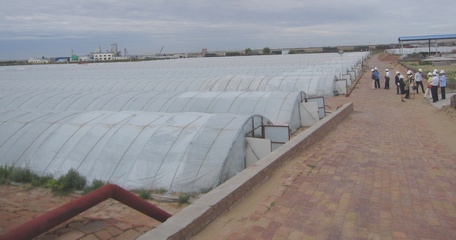Site Visit to the Inner Mongolia Maowusu Biomass Thermal Power Co., Ltd, 17-18 June 2013

On 17-18 June 2013, CSAM joined a study group consisting of representatives from UNIDO Regional Office, ADB, International Cooperation Center of National Development and Reform Commission, Inner Mongolia Development and Reform Commission, Ordos Development and Reform Commission for a site visit to the Inner Mongolia Maowusu Biomass Thermal Power Co., Ltd. organized by the International Energy Conservation Environmental Protection Association (IEEPA).
The Inner Mongolia Maowusu Biomass Thermal Power Co., Ltd. is trying to achieve carbon absorption, carbon emission reduction and carbon capture through planting Salix Psammophila (a desert shrub) for controlling desertification, while using the shrub residue for electricity generation, then capturing the CO2 from the power plant for spirulina cultivation. Desert shrubs have the feature that requires stumping every 3-5 years for survival, which demands sustained investment from government. The pattern of the Maowusu Biomass Thermal Power Plant provides a solution that planting and stumping of the shrub became indispensable for the enterprise’s development and prosperity either for electricity generation or spirulina cultivation, which does not only share the burden of the government for tending the desert shrub, but increase the income of the herdmen and restore eco-system gradually in the Maowusu desert.
Currently, most of the practices of planting, stumping, and collecting of desert shrub in Maowusu desert are conducted manually, which makes the cost of raw material of Maowusu Biomass Thermal Power Plant very expensive. Applying appropriate machinery and equipment in these processes could significantly decrease the cost of raw material and help the enterprise to become profitable. CSAM will explore potential cooperation opportunities with Maowusu Biomass Thermal Power Plant in this regard in the near future.
